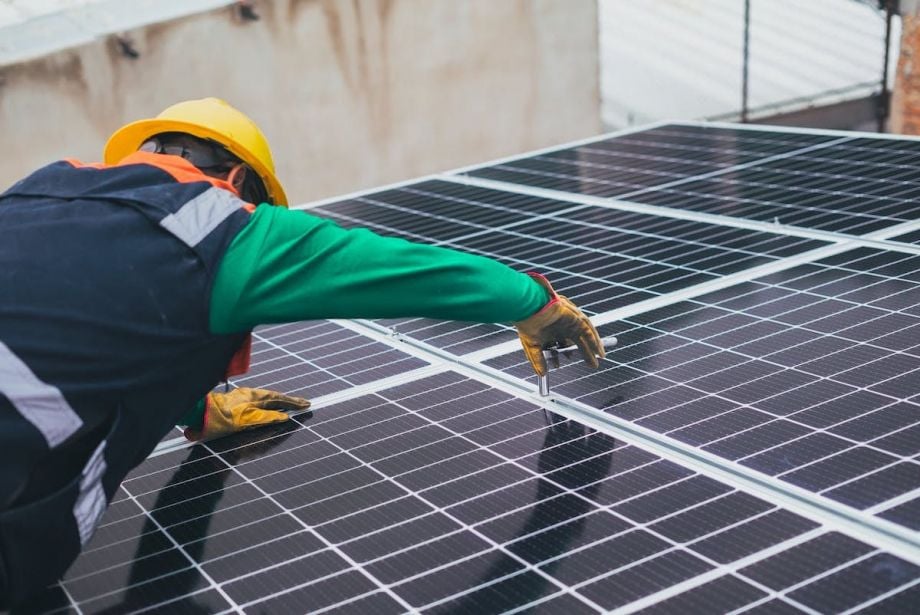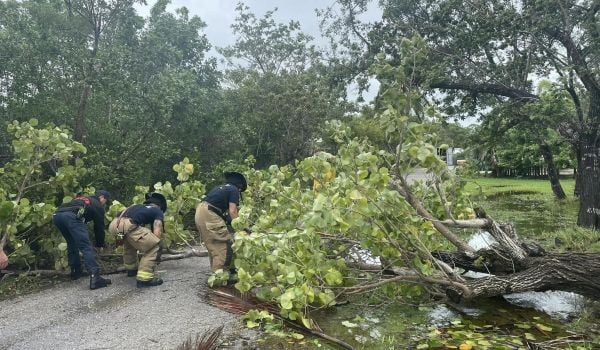Whether it’s a homeowner wanting to install a heat pump, a restaurant looking to invest in solar panels, or a neighborhood organization hoping to add local green energy capacity, cost and ease of financing pose barriers to improving climate resilience for many people businesses, and organizations nationwide.
Too often, traditional banks are skeptical of or have not previously supported climate investments. Filling this gap requires intentional policymaking, which the Biden Administration has prioritized through its new Greenhouse Gas Reduction Fund (GGRF), a first-of-its-kind $27 billion fund to finance a sustainable climate future for generations to come.
Last week, the Environmental Protection Agency announced the first round of awards under the GGRF. These investments could allow our homes, neighborhoods and small businesses to be sources of renewable energy, safe havens against environmental hazards and pillars of strength in our communities.
But achieving these outcomes requires careful consideration and community collaboration to avoid deepening existing inequities and misusing precious resources on projects and programs that won’t last. The commitment by the first round of awardees to deploy 70% of investments in historically-underserved communities is a critical first step in this direction.
At the Urban Institute, we’ve created a framework for advancing climate resilience for affordable housing, which can help local housing coalitions identify opportunities to use new federal funds and build a portfolio of investable projects. For these investments to live up to their potential, local leaders must plan for both existing and future climate risks and ensure that the most vulnerable households benefit.
Planning for existing and future climate risks
Incorporating future climate risks into the deployment of clean energy infrastructure can help local leaders more efficiently allocate limited funding and make communities more resilient to climate shocks and stresses, now and in the future. To climate-proof potential investments, local policymakers and planners can change local regulations such as building, land use and zoning codes to incentivize climate-smart and resilient projects.
Cities such as Norfolk, Virginia; Boston, Massachusetts; and Charleston, South Carolina are leading the way on zoning code changes to improve resilience. Norfolk’s Vision 2100 plan categorizes land to prioritize growth in the least flood-prone areas.
By targeting the building code, jurisdictions can encourage clean energy adoption while also adapting to climate effects. Washington, D.C. revised its building code to require urban heat island mitigation strategies such as green roofs on large developments. Additional funding opportunities to support planning and implementation include the Department of Energy’s Resilient and Efficient Codes Initiative or Building Codes Technical Assistance Program.
Investments in clean energy can also improve the physical quality of the built environment and address long-standing challenges with the quality of housing stock, especially for affordable housing. Coordination efforts between local coalitions, households, developers and contractors — like cross-sector coalitions or “one-stop shop” models — can ensure that retrofits and new developments are an opportunity to bring buildings to code, improve energy efficiency, and make resilience upgrades to improve resident health, shore up the longevity of the housing stock, and help decarbonize the residential sector.
Prioritizing vulnerable households and mitigating displacement
Advancing resilience and equity goals through the GGRF won’t be possible without dedicating the time and resources needed to ensure the most vulnerable and hard-to-reach communities can contribute to and benefit from these investments.
Leaders must balance the urgency to draw down these investments with conducting intentional community engagement. Local leaders can ensure communities have agency over investments and prevent the displacement of vulnerable households through tools such as community benefit agreements, community advisory boards that can guide project development, tailored local programs and outreach to meet the needs of mom-and-pop landlords and renters, and small business and workforce development efforts to create quality green job opportunities.
Communities can also identify strategic neighborhood-level investments to amplify project-level outcomes and generate additional health, financial security and well-being benefits for communities. GGRF funding will provide tax incentives and funding to pilot and expand neighborhood-scale distributed energy technology, which can lower energy burdens for households and build backup energy sources in vulnerable communities.
In Puerto Rico, Barrio Eléctrico increases access and affordability to distributed energy through its “community model.” This approach addresses basic energy security needs while also strengthening community cohesion by creating jobs and promoting resource sharing. The Department of Energy has several resources and initiatives to help states and localities interested in pursuing similar community solar projects.
Our framework’s guiding questions to assess community climate-resilient housing needs provide a helpful starting point for mapping local actors, challenges and opportunities. Other resources, such as the National Resources Defense Council and Center for Impact Finance’s equity guides to greenhouse gas reduction for low-income and disadvantaged communities, can offer sector-specific strategies.
While local coalitions, programs and project pipelines will vary from one community to another, the time is now for all of us to engage. This is the moment to come together locally — to leverage existing coalitions and build new ones to ensure the GGRF investments create lasting climate resilience for generations.
Sara McTarnaghan is a principal research associate and co-lead for the Climate and Communities practice area at the Urban Institute. Oriya Cohen is a policy program manager at the Urban Institute.

















Add to the Discussion
Next City sustaining members can comment on our stories. Keep the discussion going! Join our community of engaged members by donating today.
Already a sustaining member? Login here.